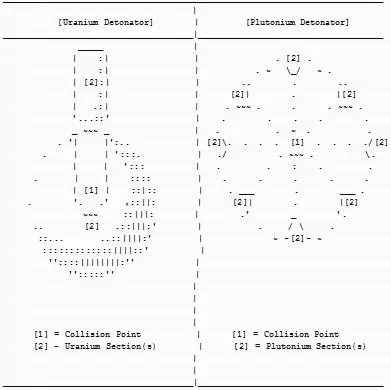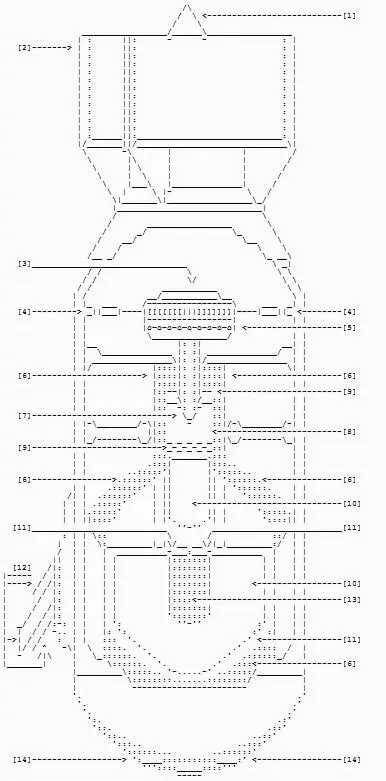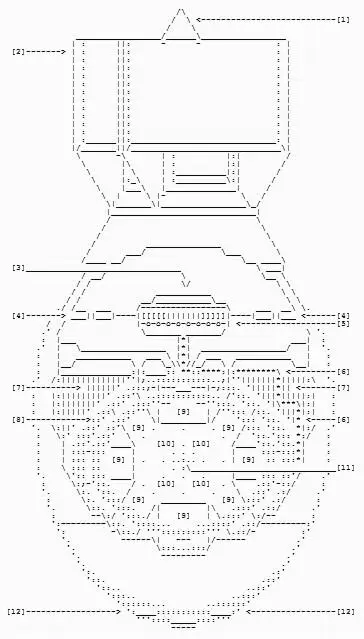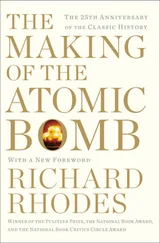J. Dyson - Documentation and Diagrams of the Atomic Bomb
Здесь есть возможность читать онлайн «J. Dyson - Documentation and Diagrams of the Atomic Bomb» весь текст электронной книги совершенно бесплатно (целиком полную версию без сокращений). В некоторых случаях можно слушать аудио, скачать через торрент в формате fb2 и присутствует краткое содержание. Жанр: Сделай сам, на английском языке. Описание произведения, (предисловие) а так же отзывы посетителей доступны на портале библиотеки ЛибКат.
- Название:Documentation and Diagrams of the Atomic Bomb
- Автор:
- Жанр:
- Год:неизвестен
- ISBN:нет данных
- Рейтинг книги:3 / 5. Голосов: 1
-
Избранное:Добавить в избранное
- Отзывы:
-
Ваша оценка:
- 60
- 1
- 2
- 3
- 4
- 5
Documentation and Diagrams of the Atomic Bomb: краткое содержание, описание и аннотация
Предлагаем к чтению аннотацию, описание, краткое содержание или предисловие (зависит от того, что написал сам автор книги «Documentation and Diagrams of the Atomic Bomb»). Если вы не нашли необходимую информацию о книге — напишите в комментариях, мы постараемся отыскать её.
Documentation and Diagrams of the Atomic Bomb — читать онлайн бесплатно полную книгу (весь текст) целиком
Ниже представлен текст книги, разбитый по страницам. Система сохранения места последней прочитанной страницы, позволяет с удобством читать онлайн бесплатно книгу «Documentation and Diagrams of the Atomic Bomb», без необходимости каждый раз заново искать на чём Вы остановились. Поставьте закладку, и сможете в любой момент перейти на страницу, на которой закончили чтение.
Интервал:
Закладка:
The neutron deflector is comprised solely of Uranium-238. Not only is U-238 non-fissionable, it also has the unique ability to reflect neutrons back to their source.
The U-238 neutron deflector can serve two purposes. In a Uranium bomb, the neutron deflector serves as a safeguard to keep an accidental supercritical mass from occurring by bouncing the stray neutrons from the 'bullet' counterpart of the Uranium mass away from the greater mass below it (and vice-versa). The neutron deflector in a Plutonium bomb actually helps the wedges of Plutonium retain their neutrons by 'reflecting' the stray particles back into the center of the assembly.
Uranium-235 is very difficult to extract. In fact, for every 25,000 tons of Uranium ore that is mined from the earth, only 50 tons of Uranium metal can be refined from that, and 99.3% of that metal is U-238 which is too stable to be used as an active agent in an atomic detonation. To make matters even more complicated, no ordinary chemical extraction can separate the two isotopes since both U-235 and U-238 possess precisely identical chemical characteristics. The only methods that can effectively separate U-235 from U-238 are mechanical methods.
U-235 is slightly, but only slightly, lighter than its counterpart, U-238. A system of gaseous diffusion is used to begin the separating process between the two isotopes. In this system, Uranium is combined with fluorine to form Uranium Hexafluoride gas. This mixture is then propelled by low-pressure pumps through a series of extremely fine porous barriers. Because the U-235 atoms are lighter and thus propelled faster than the U-238 atoms, they can penetrate the barriers more rapidly. As a result, the U-235's concentration becomes successively greater as it passed through each barrier. After passing through several thousand barriers, the Uranium Hexafluoride contains a relatively high concentration of U-235 -- 2% pure Uranium-235 in the case of reactor fuel - and if pushed further could (theoretically) yield up to 95% pure Uranium-235 for use in an atomic bomb.
Once the process of gaseous diffusion is finished, the Uranium must be refined once again. Magnetic separation of the extract from the previous enriching process is then implemented to further refine the Uranium. This involves electrically charging Uranium Tetrachloride gas and directing it past a weak electromagnet. Since the lighter U-235 particles in the gas stream are less affected by the magnetic pull, they can be gradually separated from the flow.
Following the first two procedures, a third enrichment process is then applied to the extract from the second process. In this procedure, a gas centrifuge is brought into action to further separate the lighter U-235 from its heavier counter-isotope. Centrifugal force separates the two isotopes of Uranium by their mass. [See comment.] Once all of these procedures have been completed, all that need be done is to place the properly molded components of Uranium-235 inside a warhead that will facilitate an atomic detonation.
Supercritical mass for Uranium-235 is defined as 110 lbs (50 kgs) of pure Uranium.
Depending on the refining process(es) used when purifying the U-235 for use, along with the design of the warhead mechanism and the altitude at which it detonates, the explosive force of the A-bomb can range anywhere from 1 kiloton (which equals 1,000 tons of TNT) to 20 megatons (which equals 20 million tons of TNT -- which, by the way, is the smallest strategic nuclear warhead we possess today. {Point in fact -- One Trident Nuclear Submarine carries as much destructive power as 25 World War II's}).
While Uranium is an ideally fissionable material, it is not the only one. Plutonium can be used in an atomic bomb as well. By leaving U-238 inside an atomic reactor for an extended period of time, the U-238 picks up extra particles (neutrons especially) and gradually is transformed into the element Plutonium.
Plutonium is fissionable, but not as easily fissionable as Uranium. While Uranium can be detonated by a simple 2-part gun-type device, Plutonium must be detonated by a more complex 32-part implosion chamber along with a stronger conventional explosive, a greater striking velocity and a simultaneous triggering mechanism for the conventional explosive packs. Along with all of these requirements comes the additional task of introducing a fine mixture of Beryllium and Polonium to this metal while all of these actions are occurring.
Supercritical mass for Plutonium is defined as 35.2 lbs (16 kgs). This amount needed for a supercritical mass can be reduced to a smaller quantity of 22 lbs (10 kgs) by surrounding the Plutonium with a U-238 casing.
To illustrate the vast difference between a Uranium gun-type detonator and a Plutonium implosion detonator, here is a quick rundown.
Comprised of 2 parts. Larger mass is spherical and concave. Smaller mass is precisely the size and shape of the 'missing' section of the larger mass. Upon detonation of conventional explosive, the smaller mass is violently injected and welded to the larger mass. Supercritical mass is reached, chain reaction follows in one millionth of a second.
Comprised of 32 individual 45-degree pie-shaped sections of Plutonium surrounding a Beryllium/Polonium mixture. These 32 sections together form a sphere. All of these sections must have the precisely equal mass (and shape) of the others. The shape of the detonator resembles a soccerball. Upon detonation of conventional explosives, all 32 sections must merge with the B/P mixture within 1 ten-millionths of a second.
Diagram

The lead shield's only purpose is to prevent the inherent radioactivity of the bomb's payload from interfering with the other mechanisms of the bomb. The neutron flux of the bomb's payload is strong enough to short circuit the internal circuitry and cause an accidental or premature detonation.
The fuses are implemented as another safeguard to prevent an accidental detonation of both the conventional explosives and the nuclear payload. These fuses are set near the surface of the 'nose' of the bomb so that they can be installed easily when the bomb is ready to be launched. The fuses should be installed only shortly before the bomb is launched. To affix them before it is time could result in an accident of catastrophic proportions.
IV. Diagrams of the Bombs
Gravity Bomb Model

- Diagram Outline -
---------------------
[1] - Tail Cone
[2] - Stabilizing Tail Fins
[3] - Air Pressure Detonator
[4] - Air Inlet Tube(s)
[5] - Altimeter/Pressure Sensors
[6] - Lead Shield Container
[7] - Detonating Head
[8] - Conventional Explosive Charge
[9] - Packing
[10] - Uranium (U-235) [Plutonium (See other diagram)]
[11] - Neutron Deflector (U-238)
[12] - Telemetry Monitoring Probes
[13] - Receptacle for U-235 upon detonation
to facilitate supercritical mass.
[14] - Fuses (inserted to arm bomb)
Gravity Bomb - Implosion Model

- Diagram Outline -
---------------------
Читать дальшеИнтервал:
Закладка:
Похожие книги на «Documentation and Diagrams of the Atomic Bomb»
Представляем Вашему вниманию похожие книги на «Documentation and Diagrams of the Atomic Bomb» списком для выбора. Мы отобрали схожую по названию и смыслу литературу в надежде предоставить читателям больше вариантов отыскать новые, интересные, ещё непрочитанные произведения.
Обсуждение, отзывы о книге «Documentation and Diagrams of the Atomic Bomb» и просто собственные мнения читателей. Оставьте ваши комментарии, напишите, что Вы думаете о произведении, его смысле или главных героях. Укажите что конкретно понравилось, а что нет, и почему Вы так считаете.











